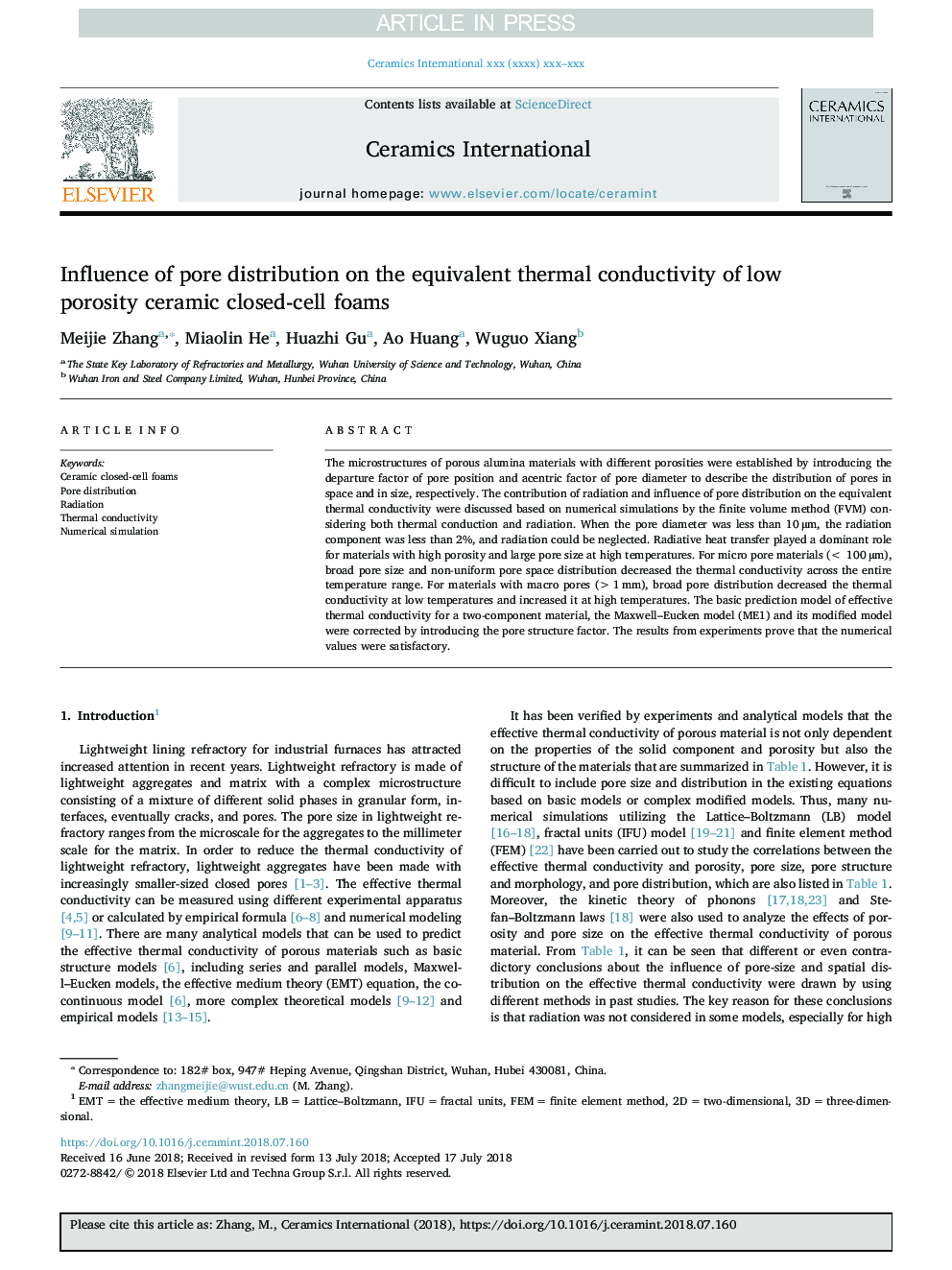| Article ID | Journal | Published Year | Pages | File Type |
|---|---|---|---|---|
| 10155393 | Ceramics International | 2018 | 11 Pages |
Abstract
The microstructures of porous alumina materials with different porosities were established by introducing the departure factor of pore position and acentric factor of pore diameter to describe the distribution of pores in space and in size, respectively. The contribution of radiation and influence of pore distribution on the equivalent thermal conductivity were discussed based on numerical simulations by the finite volume method (FVM) considering both thermal conduction and radiation. When the pore diameter was less than 10â¯Âµm, the radiation component was less than 2%, and radiation could be neglected. Radiative heat transfer played a dominant role for materials with high porosity and large pore size at high temperatures. For micro pore materials (<â¯100â¯Âµm), broad pore size and non-uniform pore space distribution decreased the thermal conductivity across the entire temperature range. For materials with macro pores (>1â¯mm), broad pore distribution decreased the thermal conductivity at low temperatures and increased it at high temperatures. The basic prediction model of effective thermal conductivity for a two-component material, the Maxwell-Eucken model (ME1) and its modified model were corrected by introducing the pore structure factor. The results from experiments prove that the numerical values were satisfactory.
Related Topics
Physical Sciences and Engineering
Materials Science
Ceramics and Composites
Authors
Meijie Zhang, Miaolin He, Huazhi Gu, Ao Huang, Wuguo Xiang,
